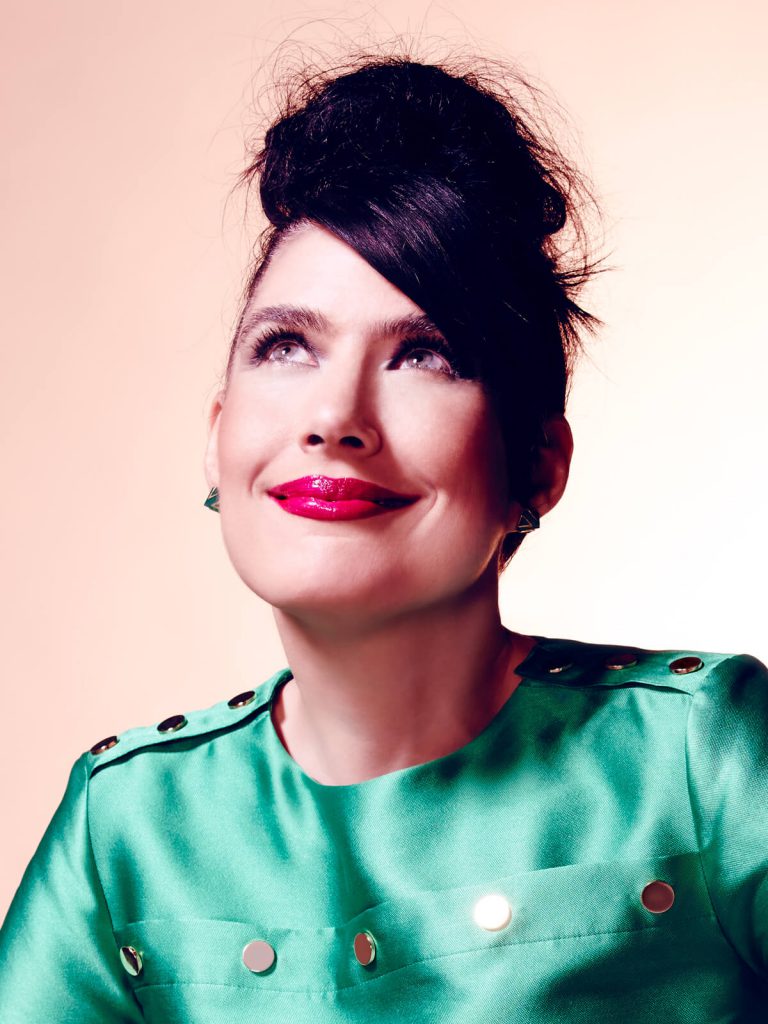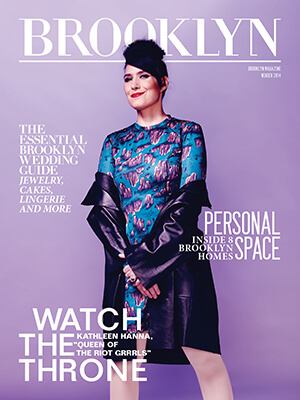Kathleen Hanna: “Queen of the Riot Grrrls”

Suno top, Faris earrings
Kathleen Hanna’s eyes well up. We’re talking about the punk legend’s most recent album, Run Fast, and the sense of comfort she felt writing it. They’re like the tears you see in the recently released documentary The Punk Singer, when her husband, Adam Horovitz of the Beastie Boys, films her lying on the couch, disoriented and crying, as she experiences the side effects of her medication for late-stage Lyme disease. That footage follows a jam-packed hour retracing her steps as the former frontwoman for Bikini Kill, and then Le Tigre, as she and an army of riot grrrls reshaped the Pacific Northwest’s early-90s punk scene. Their efforts would eventually spread across the country through zines (recently archived in a permanent collection at NYU) and on-the-ground, in-the-club, and on-the-stage campaigning for a woman’s place in a male-dominated milieu.
The day of our interview, her emotions are as ever on her sleeve, like the giant “K” emblazoned on her sweater. She laughs a lot. She has a great laugh, loud and open-mouthed, busting out like it’s been sealed in a jar. She looks like a grownup Punky Brewster, if Punky Brewster had really been punk. At the photo shoot, she’s asked to smile at the camera. “Cheshire Cat or open-mouth? Are you getting my fucked-up chipped teeth?” she asks, neither embarrassed nor proud.
Her Lyme disease has been in remission for almost four months, and she’s used her relatively good health to concentrate on her new band, The Julie Ruin, a project started with a 1997 solo album under the alias Julie Ruin, relaunched in her Manhattan apartment more than a decade later, and brought to life in a Greenpoint rehearsal space. (Brooklyn’s “the best place in the world right now,” she says.) Freed from the self-inflicted pressure of making Grand Statements on behalf of the cultural movement she helped start, Hanna and her music now exist on her terms—maybe for the first time since the beginning of her career. In those 23 years, the industry has changed. The perception of Hanna as a stubborn feminist, as the “bitch from Bikini Kill,” has started to change. And Hanna has changed, too.
Photos by Christelle de Castro, Art Director/Stylist: Julie Brooke Williams, Stylist’s Assistant: Julie Simon, Hair: Sera Sloane, Makeup: Michael Anthony
You might also like 




















